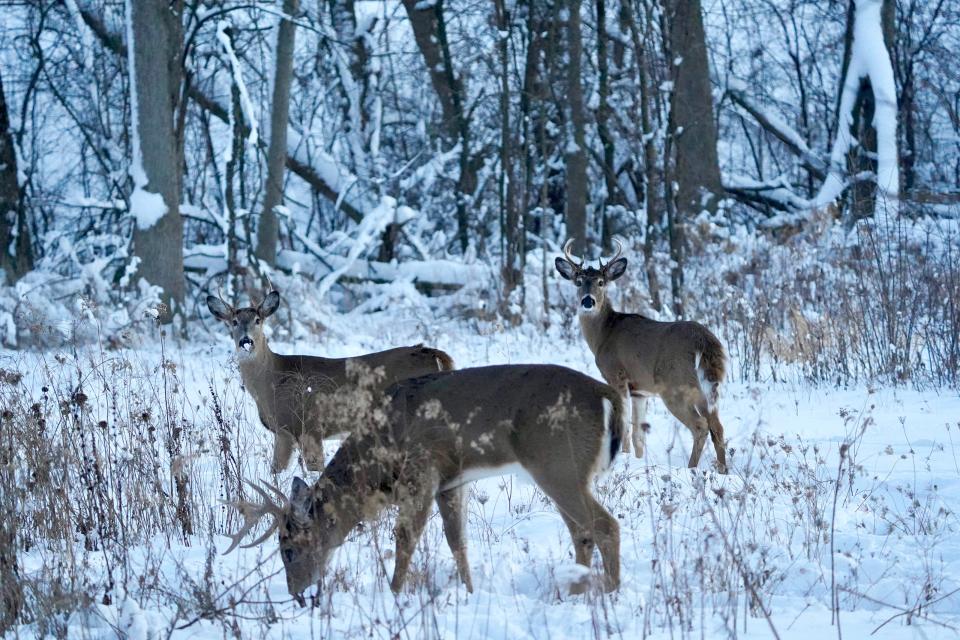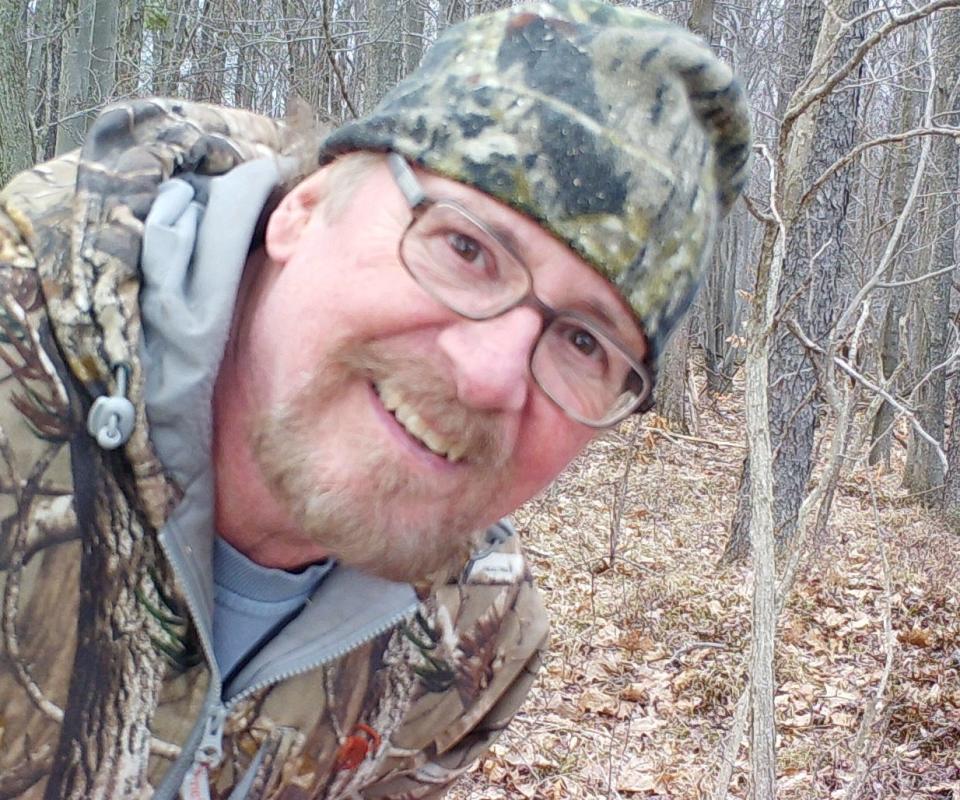Changing menu: How whitetail deer browse for their dinner during the winter
We humans only slightly modify our eating patterns during the depths of winter when compared to whitetail deer.
Virtually the same food is available to us in the middle of the winter, as at the height of summer.
But nature has given us a different survival game plan than whitetails that have to deal with cold, long nights, and ice and snow through the winter months.
Deer are forced to radically change their diets when winter sets in.
Since they can no longer forage on herbaceous plants and fruits like apples and acorns in season, their gastronomic chemistry must shift.
Whitetails have developed a system to assimilate woody browse almost exclusively.
That is, they feed on living twigs and buds … the terminal tips.
A whitetail's digestive process in the north goes into a different gear with each change of season.

In the summer the whitetail's diet is mainly herbaceous plants. In the fall, it shifts to being able to process mast (apples, acorns, beechnuts, etc.). But in the wintertime, the whitetail’s food sources are mostly browse, augmented by fortuitous encounters.
Deer get most of their nutrition during the winter, here in the North, mostly on twigs and herbaceous growth.
Inside each living twig's tip is an embryonic leaf getting ready to unfold in springtime. Nutrients from each stem concentrate there.
And that's where the whitetail finds its wintertime sustenance.
The twig tip browse is a lifesaver to northern whitetails in winter.
Deer prefer some varieties of trees and shrubs more than others, and often it’s the fancy, expensive imported ornamental shrubbery right next to our houses.
Humans in the northeastern United States, on the other hand, eat pretty much the same things as we do all year long.
But by being inside more, almost within arm's reach of the refrigerator and a supply of food, we tend to consume quantitatively more than usual, especially during the holiday season.
We who live in areas with real winters, in contrast to deer, often gain weight through the winter.
(Do I need to remind anyone about our New Year's pledges?)
Whitetails lose weight through the winter months, in contrast.
Whitetails in the Northeast and Midwest need to have bulked up their fat reserves during summer and autumn to help sustain them through the lean winter months.
And fat isn't all they need.
Minerals, stored in the animal’s bones, actually create antlers on bucks and the growing embryonic fawn's bones in doe.
Bristol Mountain:Section V skiers adjust to soft snow, 'bizarre winter' at championships
Outdoors:A second rut brings a second chance for deer hunters
However, this year, being relatively mild in most areas, with lack of long periods of significant snow depth and cold, has been easy on deer.
People and whitetail deer are alike in that they both "down shift" in winter, and are less active and should eat less.
One would think, in comparison to humans, that deer don't have an "inside" or an "outside" always being in the woods, in the outdoors.
But whitetails in northern regions often head for preferred wintering areas or "yards" as the snows build up, maybe adjacent to or in a coniferous stand, whether pine or hemlock.
While our deer don’t really yard, they still head for cover.
In fact temperatures, not to mention the wind chill, in a thick stand of pine or hemlock trees may be as much as 10 to 15 degrees warmer on a cold, sunny day than temperature "outside" in a nearby windswept field.
So, deer do head "inside" in the winter, just like we do.
And by becoming less active, less food and calories are consumed in the internal metabolic kiln, be it whitetail or human.
But whitetails gain little weight during the northeastern winters. In contrast, many humans do.

Some deer researchers have postulated that whitetails cut their metabolic rate almost in half during the winter.
If whitetails find a concentrated food source, such as at a bird feeder, often the older and larger deer eat first and keep the young, less dominant animals away.
The smallest and youngest deer, on the lowest rungs of the pecking order of the herd, many times only watch the larger and older deer eat first.
Old doe will lower their ears when a fawn or less dominant deer comes near the food source, glare, and then strike out with her fore feet.
Little doe fawns are lowest on the totem pole for dibs at the dinner table.
So when someone says at dinner, during the winter, "Please pass the potatoes, I'm ready for seconds," and there is only a spoonful left in the bowl, know that behavioral adaptation at our tables is not so dissimilar to that of the wintertime world of the whitetail deer, in some ways.
— Oak Duke writes a weekly column appearing on the Outdoors page of The Spectator.
This article originally appeared on The Evening Tribune: How whitetail deer eating habits change in winter

